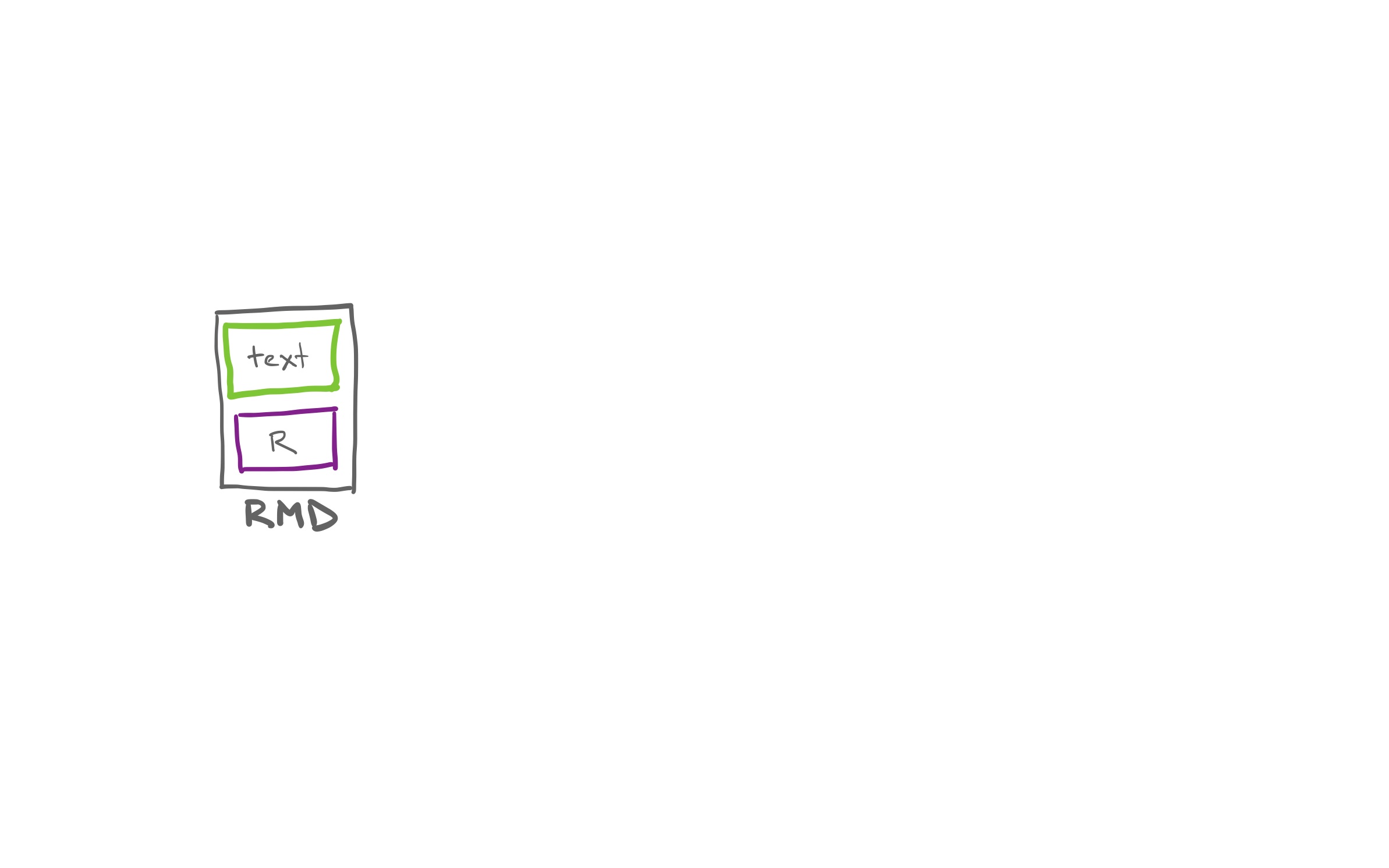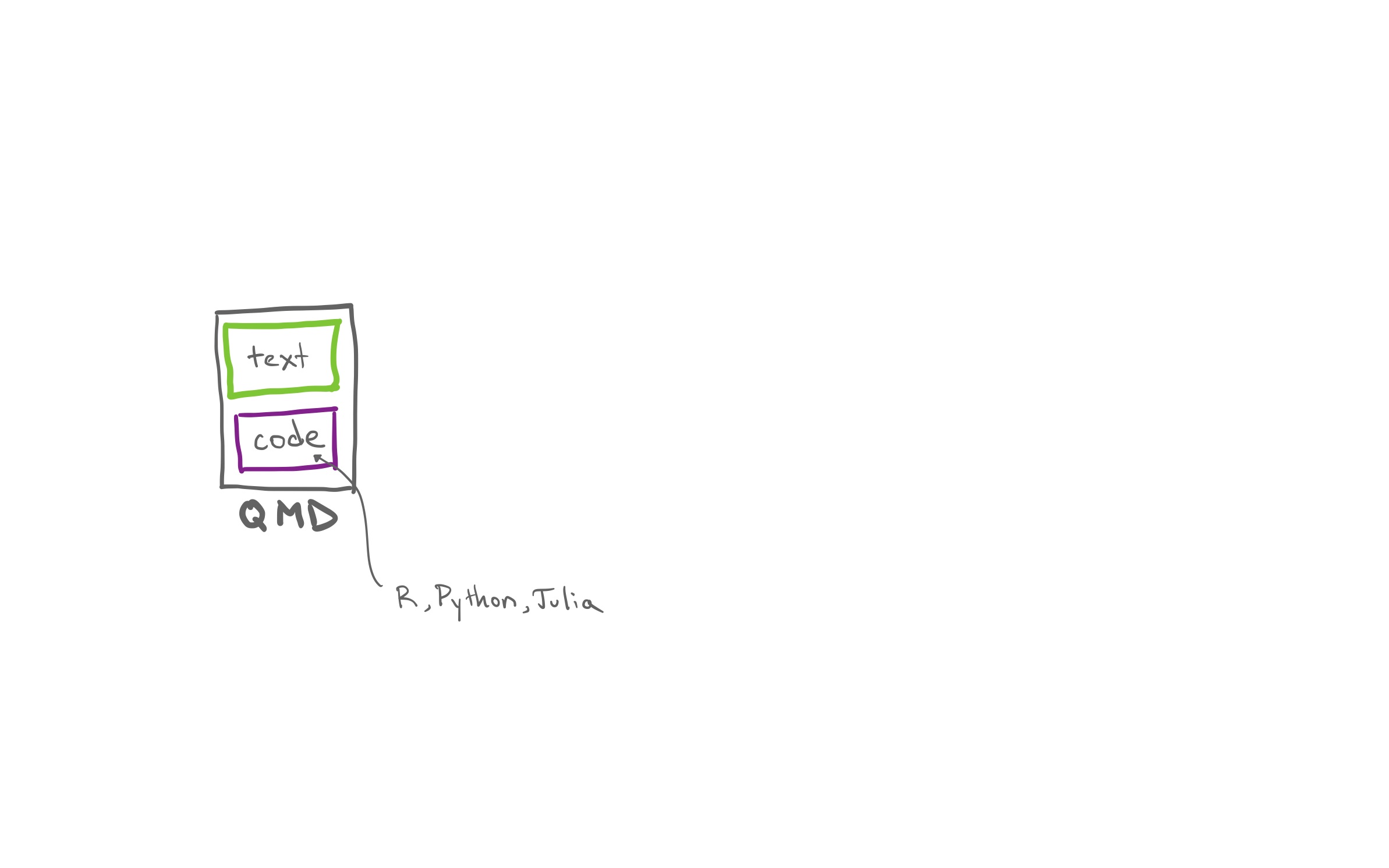Hello Quarto
From R Markdown to Quarto
UC Berkeley
Duke University + Posit
While you wait for the workshop to begin, be sure you’ve got all the tools needed for the workshop:
In addition, please download and open the exercises for this session:
Code of Conduct
The American Statistical Association (ASA) is committed to providing an atmosphere in which personal respect and intellectual growth are valued and the free expression and exchange of ideas are encouraged. Consistent with this commitment, it is the policy of the ASA that all participants in ASA activities enjoy a welcoming environment free from unlawful discrimination, harassment, and retaliation. We strive to be a community that welcomes and supports people of all backgrounds and identities. This includes, but is not limited to, members of any race, ethnicity, culture, national origin, color, immigration status, social and economic class, educational level, sex, sexual orientation, gender identity and expression, age, size, family status, political belief, religion, and mental and physical ability.
Expected Behavior
Model and support the norms of respect necessary to promote the conditions for healthy exchange of scientific ideas.
In speech or conduct, do not insult or disparage other participants.
Be conscious of hierarchical structures, specifically the existence of stark power differentials between students, early career statisticians and established career statisticians—noting that fear of retaliation from more established statisticians can make it difficult for students and early career statisticians to express discomfort, rebuff unwelcome advances, and report violations of the conduct policy.
Be sensitive to indications that may suggest that individuals are feeling unwelcome.
About me
- Associate Teaching Professor
Department of Statistics
UC Berkeley
- R Markdown user for 10+ years
- Quarto user for 1+ years
About you
Please share:
- Name
- Professional affiliaton
- What do you use R and R Markdown for?
02:00
Meeting you where you are
These materials are pitched at someone who:
knows some R + Markdown
has worked in RStudio
wants to learn about Quarto
I’ll teach you
More Markdown
New Quarto formats
New Quarto projects
Workshop structure
My turn: Lecture segments + live coding
Our turn: Live coding + follow along
Your turn: Exercises
Checking in one more time
1. Software: Download and install the latest versions of R, RStudio, and Quarto:
- R 4.2.3 or above: https://cran.r-project.org
- RStudio 2023.03.0+386 or above: https://posit.co/download/rstudio-desktop
- Quarto 1.3.321: https://quarto.org/docs/get-started
2. R Packages: Install the following packages:
3. Exercises: Download and open the exercises for this session. The easiest way is to run this line of R code at the console in RStudio.
Let’s get started!
What is Quarto?
Quarto …
- is a new, open-source, scientific, and technical publishing system.

Artwork from “Hello, Quarto” keynote by Julia Lowndes and Mine Çetinkaya-Rundel, presented at RStudio Conference 2022. Illustrated by Allison Horst.
Quarto
With Quarto you can weave together narrative text and code to produce elegantly formatted output as documents, web pages, blog posts, books and more.
just like R Markdown…
but not just like it, there’s more to it…
Quarto unifies + extends R Markdown
- Consistent implementation of attractive and handy features across outputs: tabsets, code-folding, syntax highlighting, etc.
- More accessible defaults as well as better support for accessibility
- Support for other languages like Python, Julia, Observable, and more via Jupyter engine for executable code chunks.
A tour of Quarto
Sit back and enjoy!
Your turn
Open hello-penguins.qmd in RStudio and with the visual editor . . .
- Render the document.
- Update your name and re-render.
- Inspect components of the document and make one more update and re-render.
- Compare notes with neighbors about updates you’ve made and note any aspects of the document that are not clear after the tour and your first interaction with it.
10:00
How it Works
Introducing the Quarto CLI
Revisit: What is Quarto?
Quarto is a command line interface (CLI) that renders plain text formats (.qmd, .rmd, .md) OR mixed formats (.ipynb/Jupyter notebook) into static PDF/Word/HTML reports, books, websites, presentations and more.
andrewbray$ quarto --help
Usage: quarto
Version: 1.3.340
Description:
Quarto CLI
Options:
-h, --help - Show this help.
-V, --version - Show the version number for this program.
Commands:
render [input] [args...] - Render files or projects to various document types.
preview [file] [args...] - Render and preview a document or website project.
serve [input] - Serve a Shiny interactive document.
create [type] [commands...] - Create a Quarto project or extension
create-project [dir] - Create a project for rendering multiple documents
convert <input> - Convert documents to alternate representations.
pandoc [args...] - Run the version of Pandoc embedded within Quarto.
run [script] [args...] - Run a TypeScript, R, Python, or Lua script.
add <extension> - Add an extension to this folder or project
install [target...] - Installs an extension or global dependency.
publish [provider] [path] - Publish a document or project. Available providers include:
check [target] - Verify correct functioning of Quarto installation.
help [command] - Show this help or the help of a sub-command. 




Under the hood
knitrorjupyterevaluates R/Python/Julia code and returns a.mdfile along with the evaluated code- Quarto applies Lua filters + CSS/LaTeX which is then evaluated alongside the
.mdfile by Pandoc and converted to a final output format
Aside: Lua filters
- Here is an example of a Lua filter that converts strong emphasis to small caps, from https://pandoc.org/lua-filters.html:
- Lua filters written by R/Python/Julia developers should be interchangeable between formats - not language specific!
- We won’t go into the details of writing Lua filters in this workshop, and you don’t need to worry about learning about Lua filters unless you’re working on extending Quarto.
From the comfort of your own homeworkspace



Navigating within RStudio
Rendering
- Option 1: In RStudio with
![]() as a background job, and preview the output.
as a background job, and preview the output.
- Option 2: In the Terminal via
quarto render:
Your turn
- Open the last .qmd file you were working on in RStudio.
- Compare behavior of rendering with
- RStudio > Render,
- using the CLI with
quarto render, and - in the R console via
quarto_render().
- If you’re an RStudio user, brainstorm why you might still want to know about the other two ways of rendering Quarto documents.
03:00
Quarto formats
One install, “Batteries included”
- RMarkdown grew into a large ecosystem, with varying syntax.
Quarto comes “batteries included” straight out of the box
- HTML reports and websites
- PDF reports
- MS Office (Word, Powerpoint)
- Presentations (Powerpoint, Beamer,
revealjs) - Books
- Any language, exact same approach and syntax
Many Quarto formats
| Feature | R Markdown | Quarto |
|---|---|---|
| Basic Formats | ||
| Beamer | beamer_presentation | beamer |
| PowerPoint | powerpoint_presentation | pptx |
| HTML Slides | revealjs | |
| Advanced Layout | Quarto Article Layout |
Many Quarto formats
| Feature | R Markdown | Quarto |
|---|---|---|
| Cross References | Quarto Crossrefs | |
| Websites & Blogs | ||
| Books | bookdown | Quarto Books |
| Interactivity | Shiny Documents | Quarto Interactive Documents |
| Journal Articles | rticles | Journal Articles |
| Dashboards | flexdashboard | Coming soon! |
Your turn
In RStudio, go to File > New File > Quarto document to create a Quarto document with HTML output. Render the document, which will ask you to give it a name – you can use my-first-document.qmd.
Use the visual editor for the next steps.
Add a title and your name as the author.
Create two sections, one with things you would like to use Quarto for and a second with your favorite thing about R.
Add a table of contents.
Stretch goal: Change the html theme to
sketchy.
05:00
Wrap up
What about R Markdown?
You can render existing R Markdown documents with Quarto and you can rename them to
.qmdfiles to turn them into Quarto documents.You don’t have to do this – R Markdown continues to be maintained.
However, Quarto
Offers “batteries included” shared syntax across formats
Allows you to choose your own editor and your preferred data science language
Comes with richer features out of the box
Is actively developed
Questions
Any questions / anything you’d like to review before we wrap up this module?
One last thing!
Where does the name “Quarto” come from?
 as a background job, and preview the output.
as a background job, and preview the output.